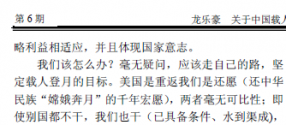You are using an out of date browser. It may not display this or other websites correctly.
You should upgrade or use an alternative browser.
You should upgrade or use an alternative browser.
China's Space Program News Thread
- Thread starter crazyinsane105
- Start date
- Status
- Not open for further replies.
Well, this is what CNSA (and Chinese leadership and some Chinese including me) disagree with you. In the 2010 article, it was stated "China must land men on the moon, China is not doing the moon landing to compete with USA, China does it for China's own wish "thousands-years wish", there is no comparison (with anybody else), even if others don't do it, we will do it (when condition is ready)"I really like the fact that China's space program has basically non-stop milestones lined up from 2021-2023, almost on a monthly basis. Assembling a multi-module space station as well as next generation cargo and manned vehicles, the space telescope, chang'e 7 swarm mini-landers, and asteroid sample-return mission are all well underway and past the point of return. I'm hoping they firm up the following missions because otherwise the calendars start looking empty around 2024-2025.
- Jupiter exploration mission, with possible lander on one of the moons
- Mars generation 2 rover (call them curiosity-class), possibly powered by RTG and integrated with a broader sample return to earth
- Venus probe mission, possibly with lander or a blimp to float in the atmosphere
- Deep space probe to neptune or uranus, both to test out new propulsion technologies and also provide better data on outer planets, since they have only been flybys in late 70s and 80s. Bonus if microsatellites could also be sent to map out some of the moons.
What I do not want to see:
- manned missions to luna; very expensive and questionable scientific value, let the americans be the guinea pigs and flag wavers
- manned missions to mars; even more expensive but better scientific value, again let the americans be the guinea pigs and bankrupt themselves, maybe china gets to rescue a mark watson too...
I do believe however that China should "race" Americans to mars from an unmanned sample return. Sample return from Mars would likely be a monumental effort, involving multiple curiosity-class rovers gathering various rock samples, with multiple retrieval rovers, Martian launch ascenders, mars orbiters and earth returners. This would be many times the magnitude and complexity of Tianwen-1 and Chang'e 5 and also necessitate launches on a LM-9 class rocket (or a bunch of LM-5s, but that would be wasteful). China could create a stretch goal like sample return by 2030 (or maybe just starting the return from Mars by 2030, since it takes years to make the journey), and then mobilize Chinese society and students like the Americans in the 60s.
If we can get some Russian or European sensors on these probes too, the better. Its time for china to create its own space alliance.

The bottom line is that
- not everything is about money, profit, or return. Very often, a seemingly "wasteful vanity" act itself has a great materialistic impact. Similar like exploding a nuclear bomb, even if no bombs would ever hit enemies. It is a demonstration of power and will.
- No need to fixate in competing with someone else in the way of tit for tat. Walk our own way. (Needless to say, but in case someone will argue against point 1 above.)
Last edited:
I think it is more appropriate to say the other way around that the moon base is an integral part of overall manned mission, the base is only built for men to be on the moon.A manned mission to Luna would be good for the implementation of a future moon base and a Helium 3 mining station; not to mention the lower gravity of Luna would make it ideal to build future spaceships, assuming something can be done to take care of the moon dust getting everywhere.
A new 3 segment, 3.2m diameter solid rocket motor have been successfully ground tested in Xi'an. The motor has 260 ton-force (2550kN) of thrust and fires for 130 seconds.
For comparison:
AJ-60A (Atlas V) - 1688kN, 94 seconds
EAP P238 (Ariane 5) - 6,650 kN, 130 seconds
Space Shuttle SRB (STS) - 12,000 kN, 242 seconds
- Status
- Not open for further replies.
